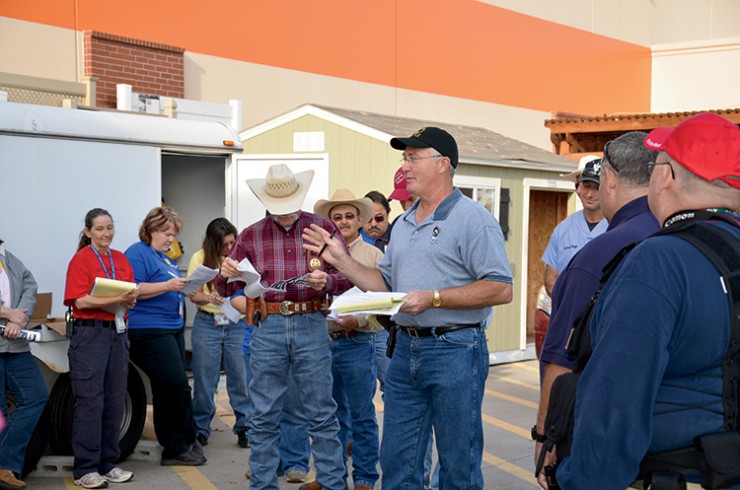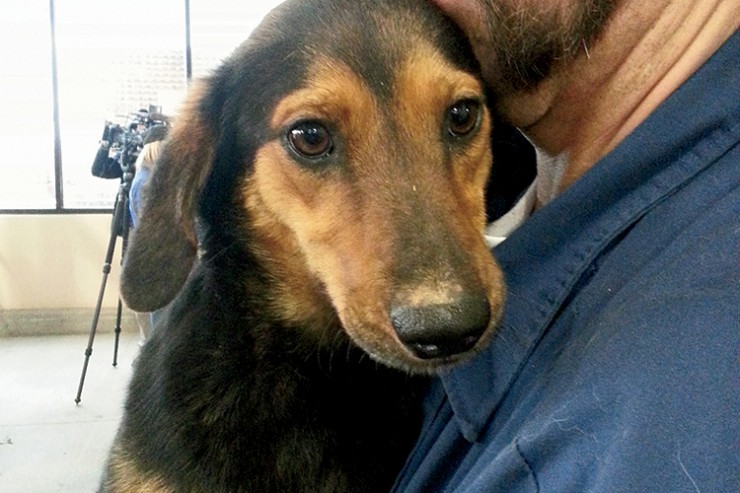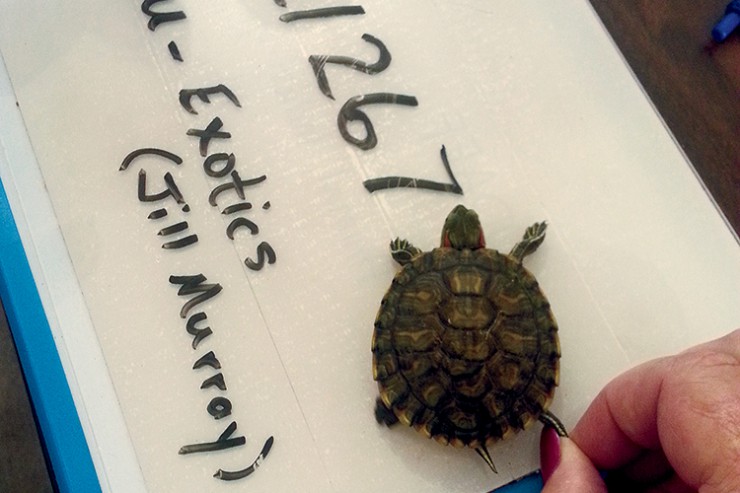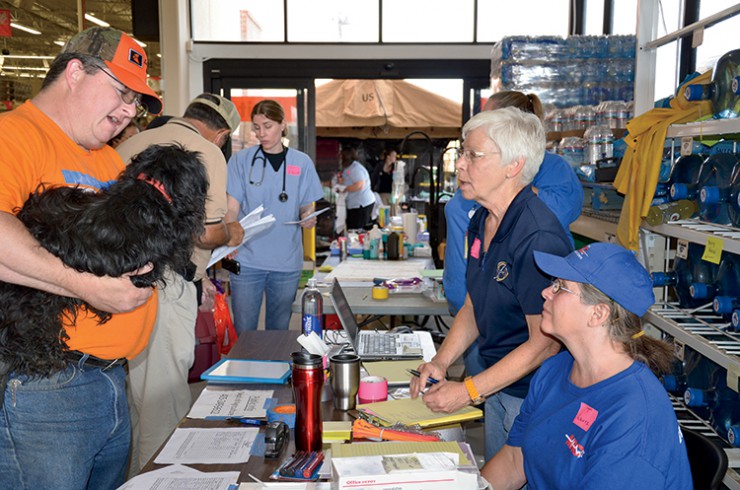Home > Oklahoma > Oklahoma Farm to Table > Oklahoma Emergency Responders Help Animals Through the Storm
Oklahoma Emergency Responders Help Animals Through the Storm

On May 20, 2013, the town of Moore, Okla. was devastated by an EF5 tornado – the most severe ranking. Not only were neighborhoods demolished, but many farms as well, with animals and livestock greatly affected.
“The amount of damage to animals was terrible. The Oklahoma Department of Agriculture, Food and Forestry (ODAFF) has never responded to something of that magnitude,” says Dr. Rod Hall, state veterinarian. He says close to 200 head of livestock were killed, most of them horses. Small animals and pets were also affected.
Responders on the Scene
In the critical aftermath of the storm, local veterinarians, animal shelters and county emergency organizations, including the McClain County Animal Response Team (McCART), responded immediately. McCART was the initial response team for the Moore tornado. Ed Cravens, emergency management director, says their team set up the first shelter at an area Home Depot and went to work.
“Our team was responsible for establishing triage, providing veterinary services, assisting in transportation of animals from the disaster site, working with sheltering facilities and more,” he says.
Because the tornado was so severe, ODAFF was called in to help manage. They began at the Moore animal shelter, working with local vets to help with triage, starting treatment on animals and sending them to other shelters. Hall says they owe a lot to the vets and volunteers that gave their time to help.
“The private vets did such a great job with animals that were alive. We were mainly just managing,” Hall says. “It’s so important to recognize those private volunteers and citizens. It’s our job, but a lot of people were there to help out of the kindness of their hearts.”

The next morning, all involved attended to more of the larger animals and livestock, with ODAFF primarily focusing on large animal carcass removal. They did everything possible to identify the animals first, looking for microchips and lip tattoos, to give owners a sense of closure and help with insurance claims.
“I’m very proud of how we handled the removal of carcasses,” Hall says. “It was done in a very kindly manner.”
Reuniting Pets With Owners
It was a team effort in identifying all the animals and trying to reunite them with owners – and one that included social media.
“We set up multiple Facebook sites with photos of animals so that people could find their pets,” Hall says. “We also made hard copies to put in the shelters. A lot of owners were reunited that way.”
One such reunion was Puss the cat, an orange tabby whose owner found him by seeing his picture posted on Oklahoma State University’s (OSU) Vet School Facebook page.
Puss was pulled from rubble by animal control four days after the tornado. He suffered a severe head and ear wound, and was very dehydrated and in shock. He was treated at the Boren Veterinary Teaching Hospital at OSU Center for Veterinary Health Sciences (CVHS) and although he ended up with only one ear, Puss completely recovered and is doing very well.

“Every animal that could have been saved was, and every animal that could have been reunited with their owner was,” Hall says. “The end result could not have been better, and although it took some work to get there, we accomplished the task at hand.”
Hall says an adoption event was held for the remaining animals where reunification with their
owners was not possible. This event was held at the end of the sheltering time period and was managed cooperatively between the shelters involved. The OSU CVHS was paramount in assisting with critically injured animals that needed specialized care.

Prepared for the Future
Despite the nature of the tragedy, both Hall and Cravens agree that there were positives.
“A big positive for us was the formation of other county animal response teams throughout the state and the awareness of their necessity,” Cravens says. He says it’s important for the future that animal response teams be a part of incident management to better support each others’ efforts.
Hall adds that the tornado helped ODAFF learn ways to be better prepared for next time.
“You can’t ever be fully prepared for something like that, but we made a lot of contacts and relationships with people in the area, so we have someone to reach out to in the future,” he says.
Hall’s goal is to be pro-active for the next bout of severe weather, and to be able to call group leaders in the area, making sure they’re ready and prepared. They’re also working on obtaining mobile vet clinics and triage centers with better equipment.
“We want to be prepared so that when a storm does hit, we can be calling people instead of them calling us. “



